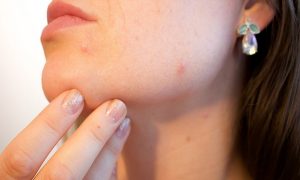Sickle cell disease (SCD) is a genetically inherited condition that affects millions worldwide. It is chronic, painful and often leads to mortality. India has the second largest number of patients suffering from the disease with the highest incidence in central India and the Jammu and Kashmir valley. Worldwide, majority of those with the condition are of African and Hispanic origins.
The number of cases has been increasing over the decades with a projected estimate of 3 to 4 lakh newborn cases, mainly in sub-Saharan Africa, between 2010 and 2050. There has been no known cure for this condition so far with most treatment methodologies aiming to manage pain and other side effects symptomatically.
On the occasion of World Sickle Cell Day, which is observed every year on June 19 to raise awareness about the disease and its treatment methods, Dr Vishal Sehgal, country head, Portea Intensive & Specialty Homecare shares the symptoms of the disease and also shares the treatment needed.
Knowing SCD
In SCD, the normally flexible red blood cells (RBCs) become stiff and sticky and acquire a sickle or crescent shape. These sickle-shaped RBCs cluster together and stick to walls of blood vessels, thereby cutting off blood supply and oxygen to different body parts or organs. This can cause organ damage or even stroke.
The disease is caused by the mutation of a gene that controls RBC production. Sickle cells carry a type of hemoglobin that contributes to the characteristic sickling. While a person with a single sickle cell gene may be an asymptomatic carrier, SCD appears in those who inherit two sickle cell genes, one from each ‘carrier’ parent.
The symptoms of this condition are as follows:
Anemia: While normal RBCs have a life span of 120 days, sickle cells only live for about 10-20 days, leaving the patient severely anemic. Typical signs of anemia include lack of energy and constant fatigue.
Pain: Patients have episodic pain in different parts of the body where blood circulation has been affected. Intense pain, called crises, can last for anywhere from a few days to weeks. Excruciating pain, ulcers, abnormal swelling of face, and bone damage may require immediate hospitalisation.
Slow growth: Children affected by SCD often fail to grow to their full potential with teenagers lagging behind in height and onset of puberty.
Problems with vision: Blood supply to the optic nerves and muscles may be affected in many cases, leading to blurred vision and other problems.
Low immunity: Patients suffer from frequent infections as spleen, the organ that helps fight infections, is affected in SCD. Due to low immunity, even common infections can prove to be life-threatening in people with SCD.
Recurrent venous thromboembolism (VTE): SCD puts patients at risk of developing venous thromboembolism or a clotting disorder in which clots are formed in deep veins, which can travel to critical organs, such as lungs, and lead to organ damage. Higher rate of internal bleeding is also seen in patients with this condition, leading to life-threatening complications.
SCD is diagnosed by testing blood under a special low-oxygen environment to confirm the presence of characteristic sickle-shaped RBCs. A test for detecting abnormal hemoglobin S and hemoglobin electrophoresis to quantify a specific protein that is present in sufferers can also be done. In case parents wish to check for SCD in the fetus, it can be done through amniocentesis and DNA analysis during anomaly scan.
Treatment for SCD
SCD treatment is aimed at managing its symptoms. Increased water intake and prescribed over-the-counter pain medication can relieve pain and dehydration. Other problems may require medical intervention at different levels.
*Severely anemic patients with hemoglobin level of less than 6 g/dl may require blood transfusion.
*RBC exchange is done in case of severe crises wherein sickle cell RBCs are removed and replaced with healthy cells.
*Hydroxyurea is a pain medication given to manage severe crises in both adults and children. However, it can suppress the bone marrow and lead to further complications upon long-term usage.
*Other treatment options include bone-marrow transplant and stem cell therapy. However, high costs and lack of donors make these options available to only less than 15% of patients.
Conclusion
Due to the incurable and complex nature of SCD, people with the condition have a reduced life expectancy compared to normal individuals. If left untreated, many may not survive beyond infancy or childhood, and in some cases, the disease may not produce any symptoms at all until after many years.
Research shows that people with SCD require more than normal intake of proteins and other nutrients. Along with innovative medical pathways, wholesome nutrition is a key factor in the holistic management of the disease and can provide a better quality of life to those suffering from SCD.




























 WhatsApp us
WhatsApp us
Pingback: Dumps with pin 2020 - Legit Dumps with Pin shop 2020
Pingback: Furnace Repairs Shortys Plumbing and Heating
Pingback: 메이저카지노
Pingback: Best Drones For Beginners
Pingback: เงินด่วน 30 นาที
Pingback: Marc Apartment Corp
Pingback: sex
Pingback: blazing trader review
Pingback: bitcoin era review 2020
Pingback: money loophole software
Pingback: Mossberg Guns for Sale
Pingback: Digital transformation consultants in US
Pingback: kliknij, aby dowiedzieć się więcej
Pingback: 사설토토
Pingback: where to order weed online
Pingback: 안전놀이터
Pingback: diamond art kits
Pingback: bandar togel
Pingback: tata cara pendaftaran cpns 2021
Pingback: replica rolex boutique
Pingback: covid-19 thailand
Pingback: qqslot
Pingback: euroclub-th.com
Pingback: White Runtz strain
Pingback: nova88
Pingback: ทางเข้า maxbet
Pingback: Buy Guns Online
Pingback: henry big boy for sale
Pingback: maxbet
Pingback: sbobet
Pingback: maxbet